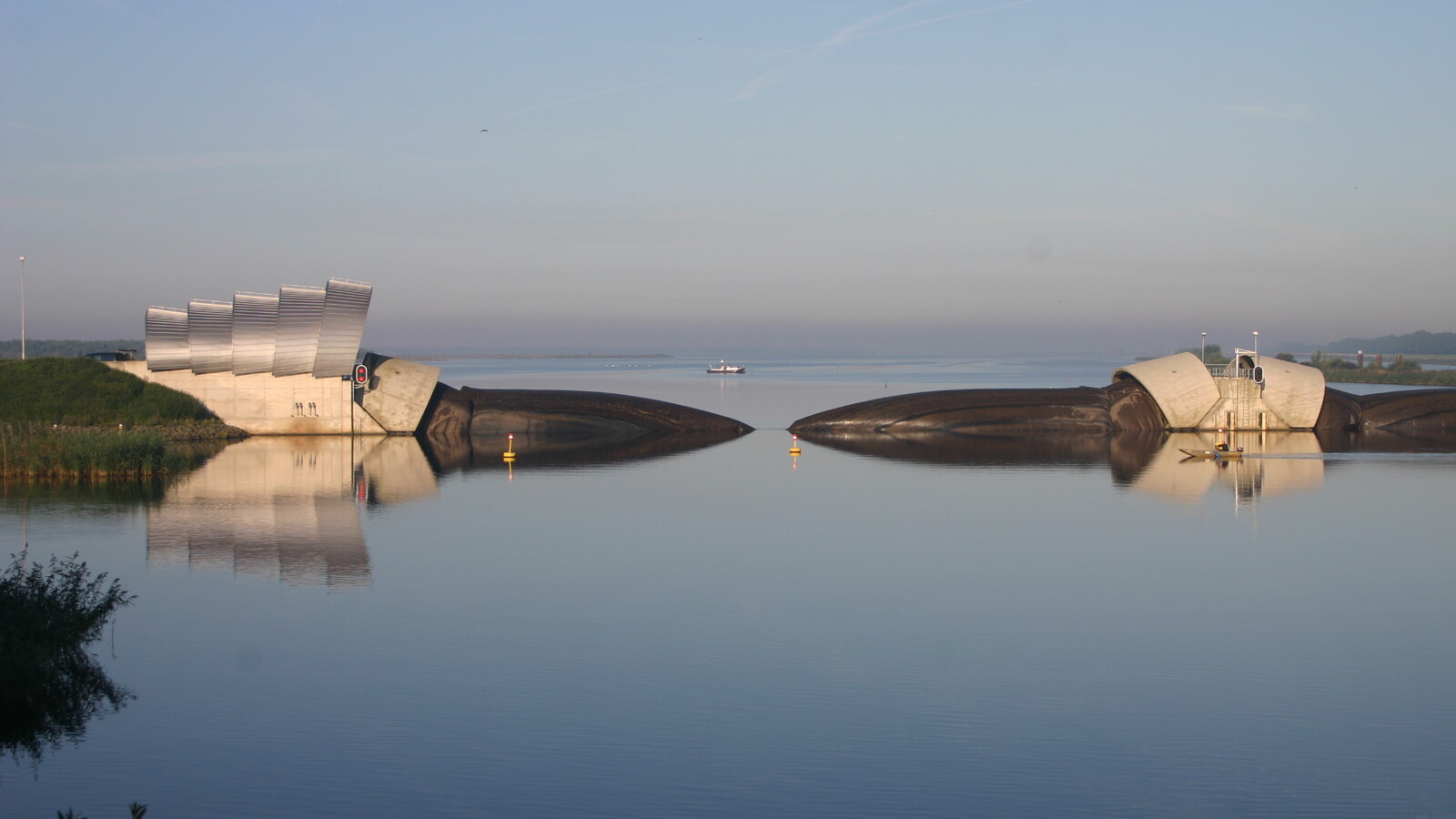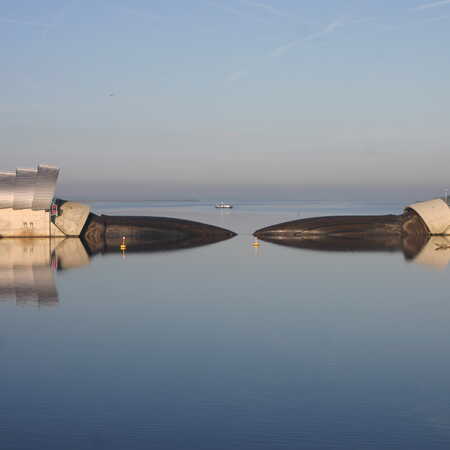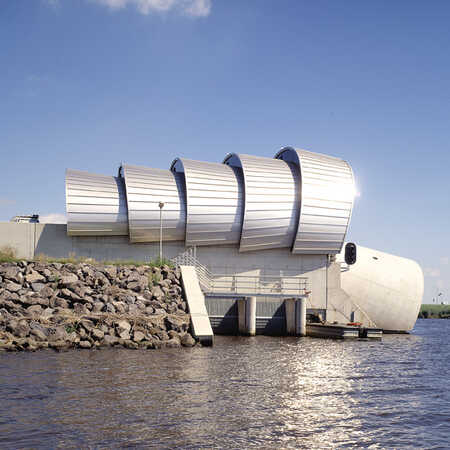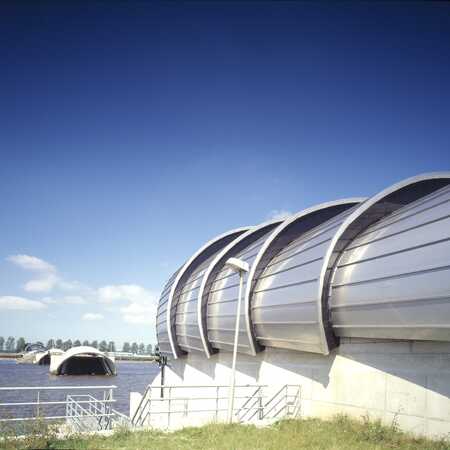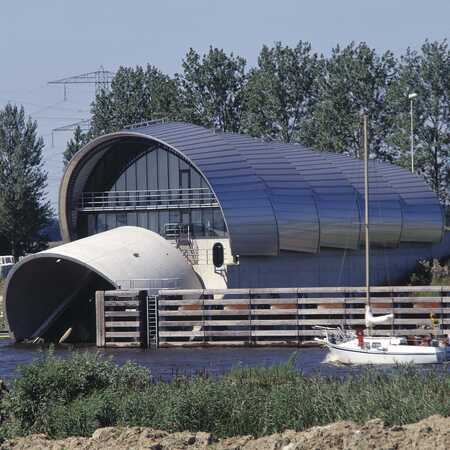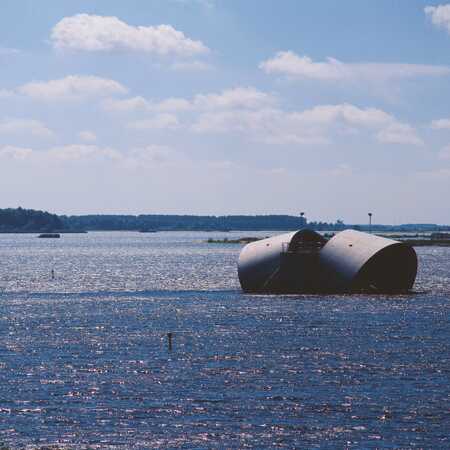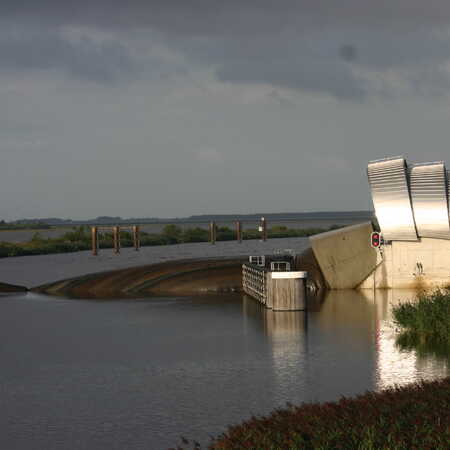0132
Gallery
A unique flood barrier
Kampen lies at the mouth of the River IJssel, which pours into the IJsselmeer just to the north of the town. It is an area liable to flooding. The barrier at Ramspol can be inflated in an emergency to hold back the water of the Ketelmeer when it surges in high winds, stopping it from flowing into the Zwarte Meer. Architectural studio ZJA created the design for the world’s largest inflatable surge barrier, known as a bladder dam.
The leading concept for ZJA’s design was that the buildings required should fit into the landscape. On both sides of the barrier are the service buildings, which match the grassy dike in scale and form. They resemble each other and each is clad with five tapered stainless-steel plates, making them reminiscent of armadillos. The closer to the water, the larger they are, so that the building opens out towards the water. At the transition point between building and water, elliptical concrete elements have been situated to protect the bladder dam when it is in use. Their shape expresses the movement that takes place when the bladder dam is inflated.
Storm surge barrier
The association with an armour-plated animal that stubbornly resists approaching danger is appropriate for the bladder dam, which can be fully inflated within an hour if need be, forming a dike ten metres high. When the barrier is deployed, clever use is made of the natural forces that come into play. The bladder, made of reinforced rubber sheeting two centimetres thick, lies anchored to the riverbed when deflated, until air is pumped in. The air naturally tries to rise to the surface, pulling the entire colossus upwards. Meanwhile, water is let in through other vents, so that the storm surge barrier becomes more robust and able to resist the forces of water and wind. Since the River IJssel continues to flow towards it from the south, it is important that the dam can be deflated quickly. Within a little over two hours, the bladder lies on the bottom again. The flood barrier is composed of three parts, each eighty metres in length, and in the future it will have to be closed several times a year in response to increasingly extreme weather.
An observation tower
The Helix observation tower was built to enable close observation of this extraordinary structure. Two spiral staircases, a double helix around a tube-shaped column, give access to a covered platform that provides a clear view on all sides. The two lightweight staircases, one for climbing and the other for descending, work as roofs for each other, so that the stairs can be used in rainy weather without anyone getting wet.
When the bladder dam is in use, and storms and rain are raging across the water, it is easy to see how the elliptical form of the barrier reflects that of the buildings. Anyone passing the dam after sunset in summer will see the light from its transparent front wall playing across the steel and water, with the two mysterious, gleaming spaceships keeping watch on either side of the water.
Award
Winner of the Agema Prize 2005
Architect: ZJA
Commissioned by: HBW Gouda
Year: 2001
Project: #132
Related
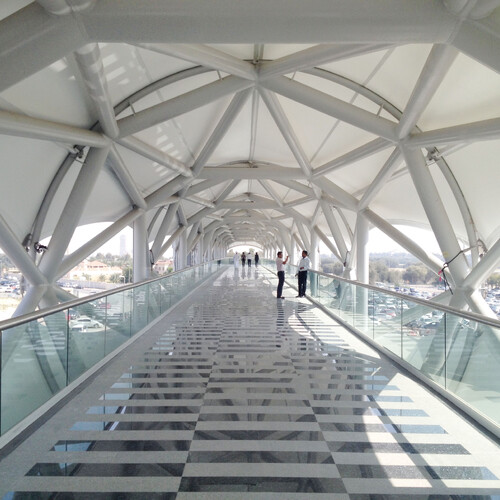
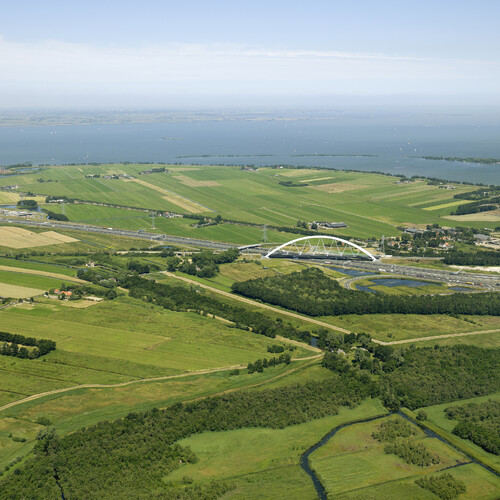
Road expansion A1/A6 Diemen – Almere Havendreef
Between Amsterdam and Almere
It seems an odd question: is it possible to drastically improve the infrastructure of the northern part of the Randstad, between Diemen and…
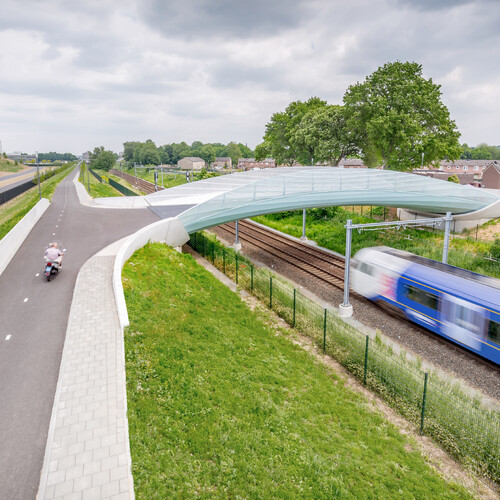
Bicycle and pedestrian bridge, Sittard-Geleen
The bicycle and pedestrian bridge over the railway line Sittard-Geleen, a design by the architectural studio ZJA, intends to simplify and…
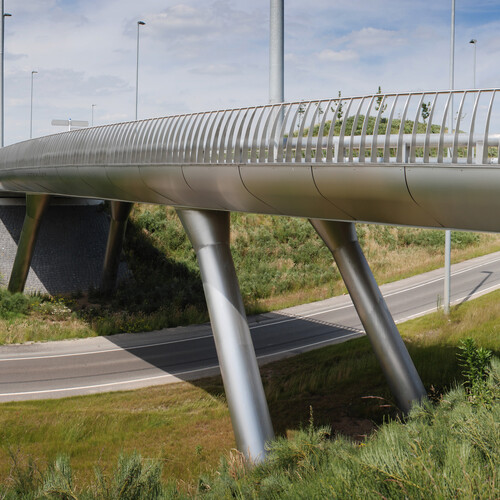
Bridge in Eindhoven
A carefully designed bridge for a seemingly common business park seems quite exceptional. But then, Meerhoven near Eindhoven is a special…
